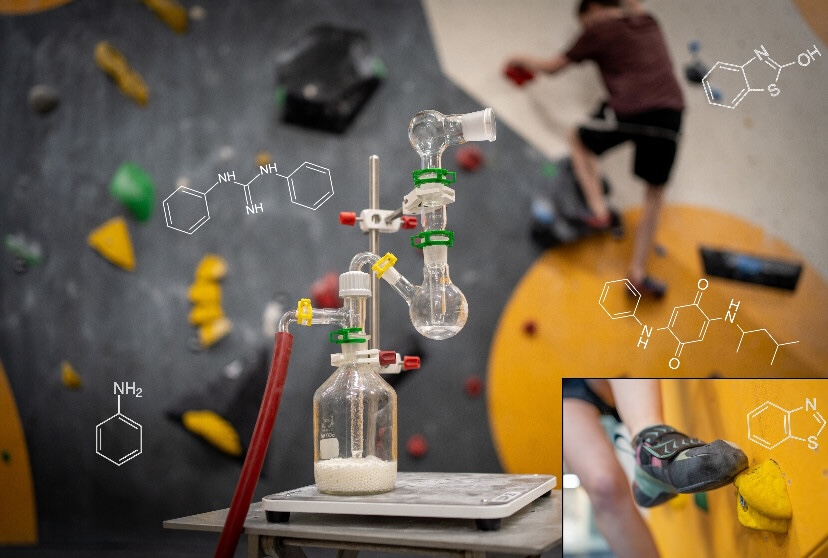Study Reveals Hidden Health Risks From Indoor Rock Climbing
A new study suggests indoor rock climbing may pose some serious health risks . . . and the risks have nothing to do with the potential for falling. Research published April 24th in ACS ES&T Air, a scientific journal from the American Chemical Society, suggests that indoor rock climbers are being exposed to high concentrations of rubber-derived compounds (RDCs) in the air they breathe, and it’s all thanks to their climbing shoes.
[RELATED: Sleeping Outdoors in a Hammock Saved This Man’s Health]
The authors note that many consumer products in the sports-equipment category contain RDCs, including climbing shoes. This is of interest because of these compounds’ “demonstrated toxicity to animal species.” In other words, if RDCs are toxic to non-human animals, shouldn’t humans be concerned? Apparently, yes.

Toxic Climbing Shoes?
In the study, researched investigated RDCs intentionally incorporated into climbing shoes for enhanced performance. “We found high concentrations of 15 RDCs in shoe sole samples . . . aerosol particulate matter . . . and settled dust in indoor climbing halls,” the study says. “The estimated daily intake via inhalation/ingestion of Σ15 RDCs for climbers and employees in some of these facilities ranged from 1.7 to 48 ng/kg/day, exceeding known intake levels of RDCs from other sources.”
How do RDCs get from shoes into the air? It’s likely from the friction of the shoes constantly rubbing up against the footholds inside a climbing gym. The researchers acknowledge that chalk used by climbers contributes to the majority of the particulate matter that degrades air quality within a climbing gym, but breathing in these rubber particles may, in the end, be even more dangerous.
In fact, the study states that some RDCs are “toxic to human lung cells.” While all sports contain some sort of inherent risk, additives to consumer products that then become particles that are toxic to human lung cells seems to go a step beyond “natural risk.”
What do you think? Will you continue to pursue indoor rock climbing despite health risks posed by RDCs? What should be done?
Read the whole study: The Invisible Footprint of Climbing Shoes: High Exposure to Rubber Additives in Indoor Facilities
Header stock image by Nitat Termmee via Getty
Source: https://outdoors.com/study-reveals-hidden-health-risks-from-indoor-rock-climbing/







